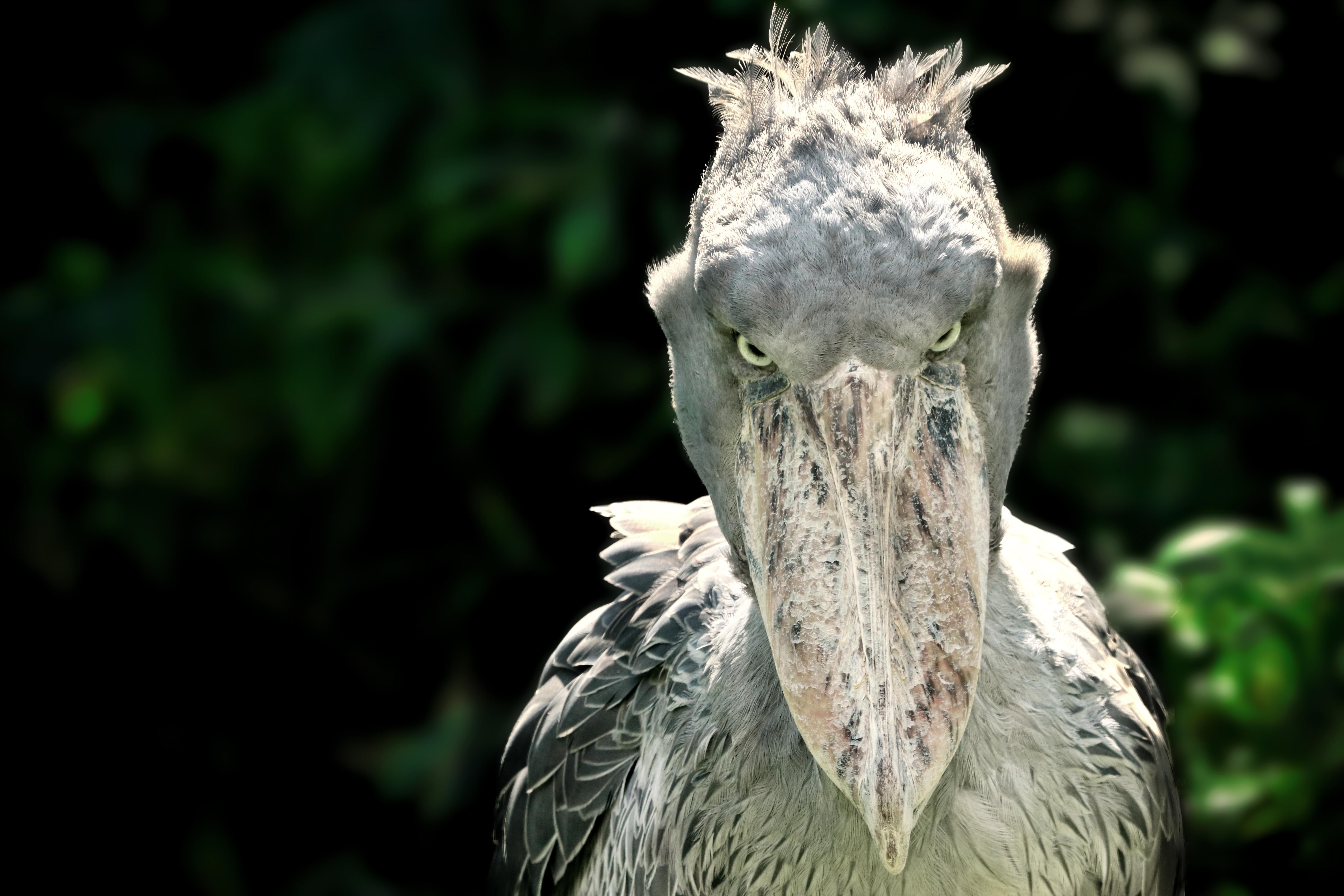

That does not mean it is bereft of all social niceties, however. Even its mating partner will usually forage on opposite sides of the territory. Any encounters with other shoebills during its daytime foraging excursions are generally unwanted and undesirable. The shoebill stork can perhaps be described as an anti-social bird. The Shoebill stork, Balaeniceps rex, also known as Whalehead or Shoe-billed Stork, is a very large Stork-like bird. Males are slightly larger in terms of body and bill size.

Standing between 4.5 and 5.5 feet in height (and with a weight of 12 pounds), the shoebill stork is among the largest birds in the world. As you can probably imagine, this large bill also needs a strong head, neck, and body to support it. Much of the bill is composed of hard keratin, the same substance as nails and horns. As one of the largest bills among all living birds, it’s used to catch and swallow large prey whole. By far the most prominent characteristic, though, is the massive shoe-like bill that ends in a curved hook, rightly earning this bird the nickname of whale headed. It’s characterized by long, spindly legs, blue to grey plumage, a powdered down on the breast and stomach, and a small tuft of feathers at the back of the head that forms a crest.

The appearance of the shoebill stork has sometimes been likened to a dinosaur. See all of our entertaining and insightful animal articles.


 0 kommentar(er)
0 kommentar(er)
